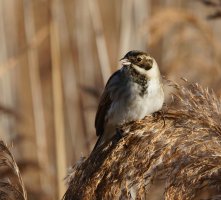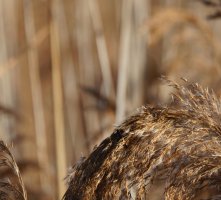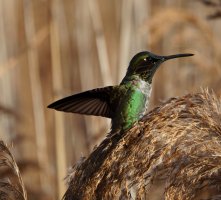You are using an out of date browser. It may not display this or other websites correctly.
You should upgrade or use an alternative browser.
You should upgrade or use an alternative browser.
Adobe Photoshop beta with Generative Fill
- Thread starter AlanF
- Start date
It's scary Click. The remove function is probably fair for removing distracting objects from images.Amazing. Excellent results.
Upvote
0
Personally I am not a fan of this tech. In my view it goes too far beyond image editing and into image creation/fabrication (which, to be fair, is what Photoshop is about) in a way which seems different from graphic design as we have known it and seems to be essentially a replacement for, rather than complement to, the photographic process. I may be in the minority for all I know (if viewers like an image, at least in some situations maybe that is all that matters?), and I accept the line between editing and creation/fabrication has never been crystal clear. However, I'd be just as happy with editing software which does not have this tech, and I don't see myself using it much if at all. The genie is out of the bottle though, of course, so I am sure we will this tech will be used in lots of images we see in the near future.
Upvote
0
unfocused
Photos/Photo Book Reviews: www.thecuriouseye.com
I doubt if many on this forum are fans. Of course there is a broad range of what individuals may find acceptable. I am at the conservative end. I don't remove or add anything to images and limit my editing.Personally I am not a fan of this tech. In my view it goes too far beyond image editing and into image creation/fabrication (which, to be fair, is what Photoshop is about) in a way which seems different from graphic design as we have known it and seems to be essentially a replacement for, rather than complement to, the photographic process. I may be in the minority for all I know (if viewers like an image, at least in some situations maybe that is all that matters?), and I accept the line between editing and creation/fabrication has never been crystal clear. However, I'd be just as happy with editing software which does not have this tech, and I don't see myself using it much if at all. The genie is out of the bottle though, of course, so I am sure we will this tech will be used in lots of images we see in the near future.
Basically following the guidelines set out in the Audubon contest rules (which are typical of many other contests and publications):
But, I do understand the value of these techniques for commercial work (advertising, etc.) where the photograph is viewed as more of an illustration, rather than a document....all submitted Photographs must depict birdlife (i.e., contain at least one bird or bird part) and accurately reflect the subject matter as it appeared in the viewfinder (a “Photograph”). Normal processing of the original file is acceptable. That includes:
● cropping
● minor adjustments to color, white balance, tone, lighting levels and curves, shadows and highlights, saturation, contrast, sharpness
● moderate dodging and burning
● removal of dust spots and moderate reduction of image noise
Photographs that have been digitally or otherwise altered beyond standard optimization will be disqualified. That includes:
● HDR frame stacking
● stitched panoramas
● images that have been manipulated by the addition, removal, or alteration (painting over, cloning, or blurring) of anything in the original subject and scene that were photographed
● borders, signatures or watermarks
● changes in color so significant that the processed colors are widely different from the original colors
● changes in density, contrast, color and/or saturation levels and dodging and burning that significantly alter content by obscuring or eliminating information in the picture
Of course, the internet is filled with overdone, overedited photos. Unfortunately, many people prefer images that reflect a fantasy world rather than the real thing.
Upvote
0
I would find it most useful for holiday-type shots, where a rustic / bucolic / cityscape scene is perfectly captured apart from a particular bystander striding through the middle (or an example a while back where an empty medieval street featured a bright yellow (!) rubbish bin). So, for my own use, rather than professionally - obviously. I'm capable of doing that sort of edit already, but this type of tech will help the workflowq a lot. My view with most photos is that I will only do a more significant edit (eg removing something material) to 'save the picture' rather than 'make the picture'.
Upvote
0
I've started removing branches/reeds/grass from images this summer and I'm happy with the results. It's not something I'd do most images, but it can save images I'd otherwise delete:It's scary Click. The remove function is probably fair for removing distracting objects from images.
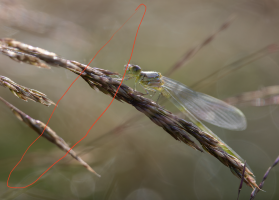
This was using content-aware-fill in LR classic, R5+100-500.
Upvote
0
Audubon rules are good. Art Morris, who does produce some wonderful bird photos, does a lot of manipulation. He's just posted one of two birds and described how he constructed it out of two images with the birds heads at different angles to give a more desirable composition. He has a particularly good eye and feeling for composition, and does it well. But, he doesn't enter them into competitions.I doubt if many on this forum are fans. Of course there is a broad range of what individuals may find acceptable. I am at the conservative end. I don't remove or add anything to images and limit my editing.
Basically following the guidelines set out in the Audubon contest rules (which are typical of many other contests and publications):
But, I do understand the value of these techniques for commercial work (advertising, etc.) where the photograph is viewed as more of an illustration, rather than a document.
Of course, the internet is filled with overdone, overedited photos. Unfortunately, many people prefer images that reflect a fantasy world rather than the real thing.
Upvote
0
I was invited to the beta several weeks ago. I struggle to call it AI, its just placing a selection from a standard set of backgrounds and many or most don't really work out well.
Here are some that I did a few weeks ago. I stopped playing with it for now. My dog had his feet on our patio door when I took the photo.
Also, a local author who signed a copy of his book Re Ring" for me in his home. I tried about 50 different key words and learned a lot about the limitations.
I've tried the various chat applications that supposedly use AI. I've yet to find one that is correct in what it gleans from the internet as fact. Its kinda like following your GPS and driving off a cliff.
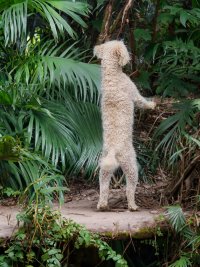

Here are some that I did a few weeks ago. I stopped playing with it for now. My dog had his feet on our patio door when I took the photo.
Also, a local author who signed a copy of his book Re Ring" for me in his home. I tried about 50 different key words and learned a lot about the limitations.
I've tried the various chat applications that supposedly use AI. I've yet to find one that is correct in what it gleans from the internet as fact. Its kinda like following your GPS and driving off a cliff.


Upvote
0
I think one possible answer is getting more and more skeptical when looking at "news" pictures (or, similarly, listening to comments).
Manipulation has become an easy way to distort the reality, and propaganda is never far away. War pictures are often "improved"...
As it's been said on this forum, removing a litter-bin is rather a form of editing, so, quite harmless in its aesthetic intention.
But, in my opinion, adding a bird where there was none is a different story.
Manipulation has become an easy way to distort the reality, and propaganda is never far away. War pictures are often "improved"...
As it's been said on this forum, removing a litter-bin is rather a form of editing, so, quite harmless in its aesthetic intention.
But, in my opinion, adding a bird where there was none is a different story.
Upvote
0
Upvote
0
Similar threads
- Replies
- 5
- Views
- 1K
- Replies
- 9
- Views
- 6K
- Replies
- 8
- Views
- 7K
- Replies
- 11
- Views
- 8K

